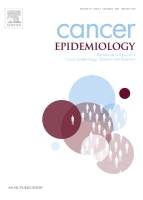
A retired obstetrics and gynecology professor under federal investigation for misconduct has notched his ninth retraction.
The latest retraction stems from an investigation by the University of Florida, where Nasser Chegini worked until 2012, which found fabricated data in three figures in a paper on the muscle cells that line the uterus.
The paper, “Differential expression of microRNAs in myometrium and leiomyomas and regulation by ovarian steroids,” was published in The Journal of Cellular and Molecular Medicine. It’s been cited 74 times, according to Thomson Scientific’s Web of Knowledge.
Here’s the note:
Continue reading Former ob-gyn prof notches ninth retraction; investigation still underway



 An environmental journal is retracting an article about the risks of pesticides to groundwater after determining it contained data that “the authors did not have permission (implicit or explicit) to publish.”
An environmental journal is retracting an article about the risks of pesticides to groundwater after determining it contained data that “the authors did not have permission (implicit or explicit) to publish.” We have discovered several errata for a New York City urologist, including in one paper that previously
We have discovered several errata for a New York City urologist, including in one paper that previously 

 To one reader of a paper on a nerve cancer, the researchers, based at a hospital in China, seemed to have found a very large number of cases of a rare cancer to study. That observation triggered an investigation into the paper that led to its retraction — and the concern that the authors in the paper never did the research at all.
To one reader of a paper on a nerve cancer, the researchers, based at a hospital in China, seemed to have found a very large number of cases of a rare cancer to study. That observation triggered an investigation into the paper that led to its retraction — and the concern that the authors in the paper never did the research at all.